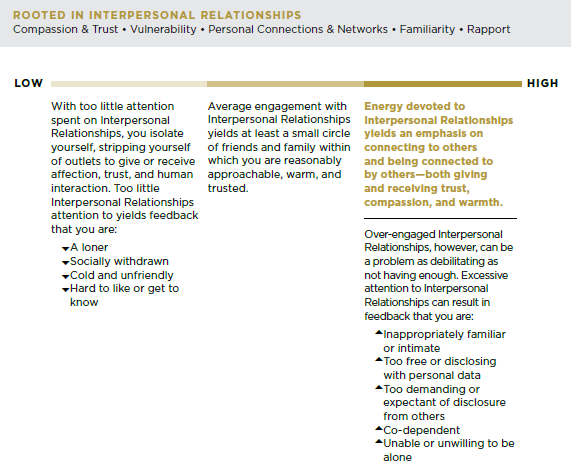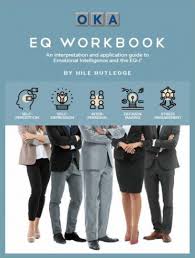Is it possible to have EQ the “Goldilocks” way: not too much, not too little, but just right?
In the EQ-i2.0 model of Emotional Intelligence, Interpersonal Relationships is your ability and tendency to give and receive trust and compassion and to establish and maintain mutually satisfying personal relationships.


Markedly low engagement with Interpersonal Relationships shows up physically a lack of physical engagement—withdrawal, disconnection from groups or human interactions; stern or sour facial expressions; closed body language or even the use of barriers—walls, doors, desks or other objects—as barriers to contact or engagement.
Too much engagement with Interpersonal Relationships is telegraphed through excessive physical contact (touching, hugging, et cetera); personal disclosures and the expectation that these will be reciprocated; overly friendly eye contact and fawning attention paid to others.
The beauty of the EQ-i as a coaching tool is it allows for such clear handles on these behaviors—what do you do and practice if you are trying to step more effectively into Interpersonal Relationships? How do you do you get Interpersonal Relationships “just right?”
10 Coachable Actions for “Just Right” Interpersonal Relationships:
- When you are introduced to someone and/or when you are speaking with someone and your eyes meet, smile in acknowledgement.
- When speaking with someone, actively listen—nod your head when you understand, ask for more information if you do not understand, echo what you hear that they have said to confirm your understanding of it.
- In conversation, disclose some of your weekend activities (past) or the plans that lay ahead (future) and ask what is going on in the other person’s life—show an interest in him/her as a person (engage this action by selecting one target person with whom an expressed interest would be neither forced or inappropriate).
- When you speak with someone, remove the physical barriers that separate you. Come from behind your desk, put down what you are holding and sit or stand facing the person.
- Put down/away your hand-held electronic device. Even holding it telegraphs that the person in front of you is competing for attention with this object.
- Ask the person questions to clarify a statement or opinion or simply to express himself or herself—and always listen to the answer.
- Give authentic (and appropriate) compliments—recognize what others are doing, contributing and are able to do.
- Ask for help or advice—this complements a person’s abilities or knowledge while showing a safe amount of vulnerability.
- Put yourself in groups or situations where contact with other people is likely or required (engage this action by carefully and perhaps infrequently selecting a group or social setting to engage).
- Walk around the office/your work space at least twice a day checking in (with a smile and a greeting) to at least two people on each of your trips.



Fantastic I loved it. Really, impressive post! Thanks for sharing such a good blog.